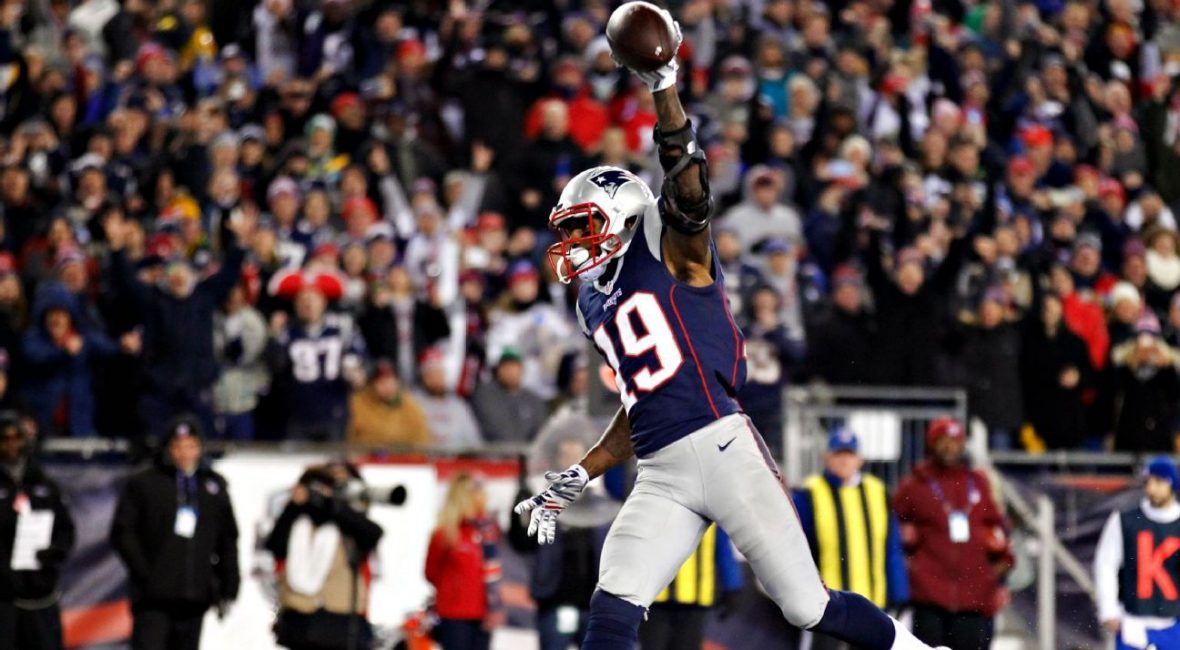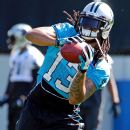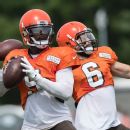FOXBOROUGH, Mass. — The New England Patriots’ decision to part ways with third-year wide receiver Malcolm Mitchell on Monday appears to be a situation where the club waited as long as it felt it could for his knee to reach a point where both were comfortable before making a roster move. Time just ran out.
Until Mitchell practiced regularly, his place on the team’s depth chart was questionable. The receiver position has been one of the top stories of training camp as the Patriots transition without Danny Amendola and Brandin Cooks, and plan for life without Julian Edelman for the first four games.
Here are some of my thoughts on the way the depth chart looks:
Edelman (5-foot-10, 198 pounds): The clear-cut No. 1 option, he has been hard on himself for a few drops in practice and said this past Friday that his legs aren’t yet where they need to be as he returns from a torn ACL that cost him the 2017 season.
Chris Hogan (6-1, 210): He has usually aligned opposite Edelman in the two-receiver set and has also taken some punt returns. Given his familiarity with Tom Brady, he figures to be leaned on a bit more during Edelman’s absence.
Phillip Dorsett (5-10, 192): He’s been one of the notable performers of the first 10 practices — at times breaking off to a second field with Brady and a few others — and it’s hard to imagine him not on the initial 53-man roster at this point. His versatility to align in all the spots adds to his value and he’s clearly more comfortable in 2018 after having a full offseason with the Patriots.
Cordarrelle Patterson (6-2, 228): His primary value comes as a kickoff returner and covering punts, but there have been multiple “wow” touchdown catches, the most recent of which was a one-handed grab this past Friday. He projects as a niche No. 3-5 option at receiver, with gadget plays to get the ball in his hands likely part of the plan.
Eric Decker (6-3, 214): Signed to a one-year deal on Friday, he has taken part in just one practice with the team as he fills the void created by the release of Jordan Matthews. While he struggled to separate at times last year and had some notable drops, offensive coordinator Josh McDaniels’ creativity and knack for effective route combinations should create opportunities for him to make plays.
Kenny Britt (6-3, 230): More of a traditional outside receiver, he has been working his way back from a hamstring injury and is not yet participating in 11-on-11 drills. He spent some one-on-one time with Brady this offseason on the West Coast, getting a jump start on attempting to be in the quarterback’s circle of trust.
Riley McCarron (5-9, 198): A first-year player from Iowa who spent last year on the practice squad, he saw an increase in repetitions with Brady over the past week. He’s more of a pure slot receiver who also returns punts, with his ability to do the latter likely his best chance to stick.
Braxton Berrios (5-9, 190): After missing most of the spring with an undisclosed injury, the sixth-round pick from the University of Miami has been working mostly behind McCarron to this point. He is similar to McCarron in that he plays the slot and returns punts, and seems to have a top-notch attitude and approach.
Devin Lucien (6-2, 200): While a long shot to stick on the roster, the 2016 seventh-round pick has made a few notable plays in practice that reflect why he’s still worthy of the coach’s time from a developmental standpoint.
Paul Turner (5-10, 193): The Louisiana Tech alum was put in a tough spot after being signed a few days into training camp, so he’s learning on the fly. He is competitive in drills.
Extra Point: Special-teams captain Matthew Slater (6-foot, 205) also warms up with the receivers, but his primary role is in the kicking game.










